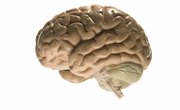To determine whether or not someone has an intellectual disability, three criteria must be met. The individual must be given a standardized intelligence test and an adaptive behavior test. Scores on both of these tests must be below average to make the person qualify for the diagnosis of intellectual disability. In addition, the difficulties that the individual experiences in daily life must have started prior to the person's 18th birthday. If any one of these criteria is not met, the diagnosis is not intellectual disability, but may be traumatic brain injury, learning disability or something else.
Standardized Intelligence Testing
Seat the person in a comfortable room with few distractions. Tell him that he is going to answer some questions, but that it is not graded and to just do his best. Depending on the person, you may not want to use the word test. This could stir up a lot of anxiety, which would impact performance.
Let the person know that she can use the restroom, if needed, and show her where it is. Tell her how long you are going to work with her. Use a timer to help the person keep track of how much time is left in the session, unless it is a distraction.
Begin the test. The Wechsler series of IQ tests, the Kaufman Brief Intelligence Test, the Stanford-Binet Intelligence Test and the Comprehensive Test of Nonverbal Intelligence are commonly used IQ tests.
Complete the parts of the test you have decided to give the person according to the protocol. Some of the sections may involve the test-taker working on the test independently, while on other parts of the test, the test-giver will ask questions of the test-taker.
Score the test. Most tests come with scoring software that only requires you to enter the individual's answers. The score on the IQ test will determine the degree of intellectual disability in conjunction with the score on the adaptive behavior scales.
Adaptive Behavior Scales
Use an adaptive behavior test, such as the Vineland Adaptive Behavior Scale or the Developmental Profile-II, to determine the individual's functional abilities. Adaptive behavior tests measure conceptual skills, such as telling time, self-direction, social skills and functional independence. Individuals with intellectual impairments are below average in adaptive skills.
Interview two people from two different settings who know the person well. Usually this is a parent and a classroom teacher. Sometimes the protocols are given to the interviewees to complete on their own. These people rate the individual's ability to do certain tasks or behaviors. Once they are finished, the tests are returned to the test administrator.
Score and compare the tests with one another. Most of the time, the scores in the two environments are quite similar for people with intellectual disabilities. Use the scoring criteria included with the test to determine if the individual falls into the below-average range of adaptive behavior scores.
Determining Intellectual Disability
Decide whether or not the person qualifies as having an intellectual disability. This is determined by the scores of the intelligence test and the adaptive behavior test. The scores of both tests must be below average, and the symptoms of the disability must have been present before age 18. If the test scores are low, but the person did not have these problems until he was 25, for example, he would not be diagnosed as intellectually disabled.
Compare the scores with the standardized test scores in the test protocol to determine the level of disability. The majority of people have IQs in the range of 85 to 115, with 100 being the average. People who fall below 85 and who have low adaptive behavior scores are considered intellectually disabled. People with scores between 70 and 84 are considered mildly intellectually disabled. Those with scores between 55-69 are moderately intellectually disabled. Severe intellectual disability includes people with scores ranging from 40-54. Below 40 is considered profoundly disabled. Notice that these scores encompass 15-point increments. This is because the standard deviation in the most commonly used IQ tests is calculated at 15 points above and below 100. In other words, when the test was initially being standardized on a large population, most of the scores fell within 15 points above or below the average score of 100.
Meet with the person's educational team and present the results of the tests. If everyone agrees that the scores indicate an intellectual disability, each team member completes and signs the paperwork. Since one of the criteria for intellectual disability is onset prior to age 18, most of the time the classification of this disability is made by the educational team, which can include a doctor, to determine eligibility for special education services.
Related Articles
References











